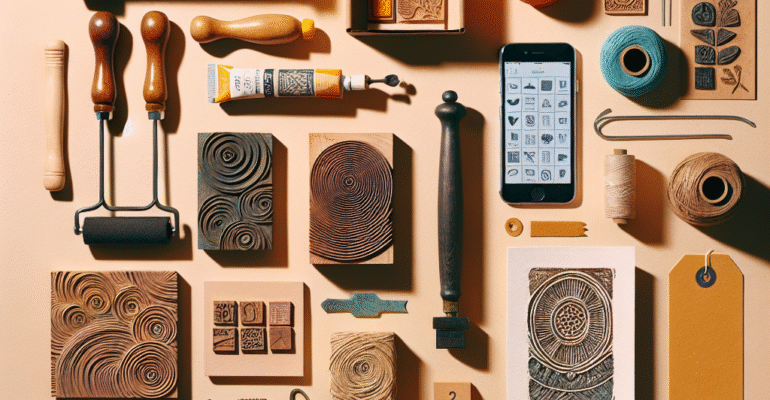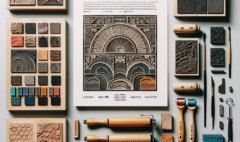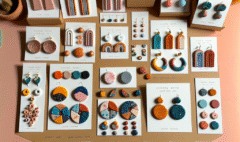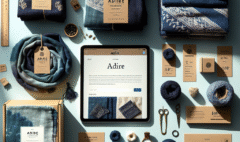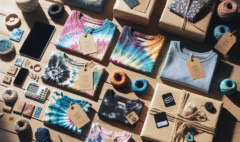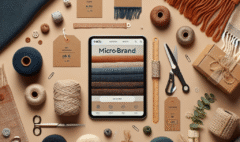Cut, Ink, Profit: Start a Linocut Print Studio and Make Your First $1,000 in 14 Days
Cut, Ink, Profit: Start a Linocut Print Studio and Make Your First $1,000 in 14 Days
Cut, Ink, Profit: Start a Linocut Print Studio and Make Your First $1,000 in 14 Days
WHY LINOCUT NOW
Linocut is the people’s print. It is stubbornly tactile in an age of screens. You feel the resistance of the block. You smell the ink. Every impression carries the press of your hand and a record of your intent. That is why collectors still reach for hand printed work in a digital century.
For African makers and allies across the diaspora, linocut comes with history and leverage. Artists at Rorke’s Drift in South Africa turned simple tools into political language. Community groups in Harare, Accra, and Nairobi use prints to raise funds or call a crowd. Today, the same humble materials open multiple income streams for a small studio.
- Low startup cost. Under 150 dollars for a tight kit.
- Multiple revenue lines. Original editions, open minis, stationery and textiles, licensing for patterns, workshops.
- Timeless aesthetic. Graphic punch, archival value, and authenticity that stands up against mass produced wall art.
This guide builds a lean studio that aims for a first 1,000 dollars in 14 days. It is practical, grounded, and aware of the cultural soil we stand in.
A QUICK NOTE ON SCOPE
If you read our earlier deep dives on political poster histories or beadwork supply chains, this playbook takes a different lane. Less macro history, more cash flow and craft. It bridges craft decisions with a clear revenue timeline, without repeating past angles.
TOOLS ON A BUDGET, UNDER 150 DOLLARS
- Linoleum blocks. Start with 6 by 8 inch or 8 by 10 inch battleship grey lino. Two to four blocks.
- Carving tools. One handle with V and U gouges. A detail V for lines, a wider U for clearing fields.
- Brayer. A 4 inch soft rubber brayer for ink transfer.
- Baren or wooden spoon. For hand burnishing if you do not have a press.
- Inks. Water based relief inks for easy cleanup, or oil based for richer blacks. Start with black, plus one accent color.
- Registration aids. T bar guides or simple pinned tabs.
- Paper. Mid to heavy weight printmaking paper like 100 percent cotton rag. A few sheets of newsprint for tests.
- Glass or acrylic plate. For rolling out ink.
- Cutting mat and craft knife. For trimming paper and tape tabs.
- PPE. Nitrile gloves, cut resistant glove for the non cutting hand, apron. Safety first.
Keep receipts. Track spend. Profit is a habit, not an accident.
SAFE, SMART SETUP
- Ventilation. Open a window. Use a small fan to move air, especially with oil based inks.
- Blade control. Always carve away from your body. Stabilize the block. Use a bench hook or a piece of shelf liner to prevent slips.
- Ink handling. A pea sized amount goes a long way. Close lids between passes to keep dust out.
- Clean and dirty zones. Left side clean papers and tools. Right side ink, brayer, inking plate. Hands move clean to dirty, never reverse without wiping.
- Drying space. Clothesline with clips, or a wire shelf. Leave air gaps. Label proofs and finals.
DESIGN WITH MEANING
Bold linocuts thrive on contrast, silhouette, and rhythm. Start with sketches that translate into light and dark. Think in shapes, not outlines. Consider the ethics of cultural reference.

- Research. If you draw from Adinkra, Uli, Ndebele geometric systems, Swahili kanga proverbs, or Amazigh patterns, read primary sources and consult community voices. Learn the names and meanings, then credit them.
- Collaborate. Commission a proverb from a local elder or a designer steeped in the motif’s lineage. Share revenue. Document the process in your listing.
- Voice. Pair a graphic motif with a lived contemporary theme, migration, water justice, market day hustle, a cityscape at dawn. This anchors heritage in the present.
Story seed. Ama in Jamestown, Accra, began with the Adinkra Dwennimmen, the ram’s horns, a symbol of strength and humility. She paired it with a portrait of market porters balancing basins at sunrise. Ten percent of sales went to a neighborhood reading circle. Buyers did not just acquire paper, they joined a story.
TRANSFER AND CARVING TECHNIQUES
- Reverse your art. Remember prints mirror the block. Flip text or use tracing paper to transfer correctly.
- Map light and dark. Pencil a value plan on the lino. X marks the areas to carve away.
- Test cuts. Practice on a corner. Set line weight and decide your texture, hatch, stipple, or flat fields.
- Consistency. Keep line widths steady unless variation serves the image.
- Clear large areas. Use a wide U gouge. Work in shallow passes to avoid tear out. Rotate the block, not your wrist.
- Avoid chatter. Warm the lino slightly with a desk lamp if it is too hard. Keep blades sharp. Clean crumbs regularly.
INKING FUNDAMENTALS
- Condition ink. Roll a thin film on glass until it sounds tacky, a soft hiss. No ridges on the brayer.
- Load evenly. Roll the brayer in multiple directions. Then on the block in gentle passes. Too much pressure floods details.
- Plate temperature. Cold rooms stiffen ink. Warm up the workspace or use a small amount of extender for smooth roll out.
- Quick diagnostics. Patchy prints mean not enough ink or uneven pressure. Shiny, slippy surfaces mean too much ink. Grainy deposits mean dust or dry ink.
REGISTRATION THAT WORKS
- T bar setup. Tape an L shaped guide to your inking surface. Tape paper tabs to the back of the sheet. Align the block into the corner for each pull.
- Pinned tabs. For multi color work, use registration pins and matching tabs on every sheet.
- Borders vs full bleed. Clean borders look classic and minimize fingerprints. Full bleed is dramatic but needs tighter alignment and careful drying.
PROOF, ADJUST, REPEAT
Pull two to three proofs on newsprint. Circle problem zones in pencil. Are lines too thin. Are fields too busy. Carve, then proof again. When the image reads clearly from arm’s length, lock your block. Do not over fuss. Mystery is part of the handmade charm.
EDITIONING LIKE A PRO
- Edition size. Start with 20 to 40 for a first launch. Scarcity supports price, but you still need access for buyers.
- APs. Keep two to four artist proofs. Mark them AP. Do not oversupply.
- Consistent pulls. Print the whole edition in the same session if possible. Same ink, same pressure, same paper.
- Numbering and signing. Title in the center bottom margin. Edition number on the left, like 3 slash 30. Signature and year on the right. Use a soft pencil, not pen.
- Records. Keep a ledger with paper type, dimensions, date, edition size, and buyers. This is long term equity.
MULTI COLOR OPTIONS
- Reduction printing. Carve and print the lightest color first, then carve away more of the same block, print the next color, and so on. No turning back. High drama, big reward.
- Key block and color blocks. Carve a detailed key in black or dark color. Create separate color blocks for flats. Use pins for perfect registration.
- Avoid muddy color. Plan a palette with clear warm or cool bias. Let layers dry fully. Print transparent inks over opaque bases for luminous effects.
PAPER AND ARCHIVAL CARE
- Paper. Cotton rag papers like Fabriano, Hahnemühle, or locally made cotton blends where available. Deckled edges signal craft.
- Drying. Use drying racks or lines. Interleave with clean newsprint if stacking. Do not let damp sheets touch.
- Protection. Once dry, slip prints into glassine sleeves with backing boards. Store flat in archival boxes.
SCAN AND DIGITIZE
- High resolution. Scan at 600 dpi for prints, 1200 dpi for linework. If no scanner, use a DSLR or a modern phone with a tripod and even daylight.
- Color correction. Match the print’s tone, do not fake

it. Clean dust, but keep the texture.
- Vectorize for merch. Convert clean edges into vectors for tote, tee, or pattern licensing. Maintain a clear audit trail if a collaborator contributed motifs.
PRICING TO PROFIT
Start from the numbers, then trust your value.
- Costs. Materials per print, packaging, platform fees, plus a fair hourly rate.
- Time. Track design, carving, proofing, editioning, digitizing, listing.
- Scarcity and story. Hand pulled prints with a strong narrative carry premium pricing.
Starter formula, target 1,000 dollars in 14 days:
- Edition of 30 at 45 dollars each. Gross 1,350 dollars.
- Costs, paper and ink 90 dollars, packaging 60 dollars, fees 135 dollars, incidentals 40 dollars. Total costs 325 dollars.
- Net before tax about 1,025 dollars. Hit your mark with one strong edition. Add three mini open editions at 15 dollars each for upsells.
Test your price. If 60 percent of the edition sells in 48 hours, consider a modest increase on the next release.
BUILD A PRODUCT LADDER
- Originals. Limited editions in the 40 to 120 dollar range to anchor value.
- Minis. Open edition 4 by 6 inch prints at 12 to 20 dollars for impulse buys.
- Art cards. Holiday or proverb series. Bundles of three or five.
- Apparel and totes. Single color transfers with bold motifs.
- Limited giclée prints. For detailed color expansions, always labeled clearly as reproductions.
- Licensing. Patterns for boutiques, book endpapers, or album art. Keep terms clear.
BRAND, STORY, AND AESTHETIC
- Cohesive palette. Black plus one accent that threads through your line.
- Maker bio. Root it in place and purpose. If you draw from Oromo patterns or Ga proverbs, say how you learned and who guided you.
- Process reels. Short clips of carving, inking, and the first reveal moment. People buy the journey as much as the finish.
Human story. In Bulawayo, Tariro learned relief printing from her grandmother’s woodcut memories, carved on avocado crates in the 1970s. She built a 2 meter clothesline in the kitchen. Her first editions celebrated women who rebuilt a neighborhood clinic after a flood. A local café gave her wall space. In two Saturdays she sold out, then took three licensing offers for a pattern based on reed baskets. Cash flow met community.
PHOTOS THAT SELL
- Top down flat lays. Neutral background, styled with tools for context.
- Lifestyle shots. On a wall, above a desk, with natural light.
- Macro textures. Show the ink’s tooth and the embossed impression.
- Hand in frame. Give scale. Let the paper edges show.
PLATFORMS AND LAUNCH PLAN, 14 DAYS
Day 1 to 3, design and carve. Post daily behind the scenes.
Day 4 to 5, proof, adjust, and finalize the block. Photograph the proof.
Day 6 to 7, print the edition. Dry and sign.
Day 8, digitize. Prep files for listings, reels, and merch.
Day 9, brand kit. Write your bio, values, and motif credits. Build a simple press sheet.
Day 10, listings and SEO. Etsy or Shopify with keywords like linocut print, African inspired, hand pulled.
Day 11, email mini launch. Subject line, First edition drops at noon. Limited to 30.
Day 12, reels on Instagram and TikTok. Show the reveal. Invite DMs for studio pickups.
Day 13, craft fair pop up or café wall. Bring a square reader, a short pitch, and a price ladder.
Day 14, restock minis, analyze sales, and plan the next release.
Continue
SALES CHANNELS
- Etsy basics. Clear titles, tags, materials, and story led descriptions. Offer tracked shipping.
- Instagram drops. Carousel of process, then a final hero shot. Pin a comment with price and link.
- Newsletter waitlist. Build with a simple freebie like a phone wallpaper of your print.
- Local boutiques and wholesale. Pitch with a one page line sheet. Offer 50 percent wholesale or consignment at 60 percent to you if traffic is strong.
- Markets. Bring a checklist, tent, weights, display grids, change float, and a small repair kit.
Sample pitch template:
Hello [Name], I am [Your Name], a relief printmaker working with [motif lineage and credit]. My new edition, [Title], explores [theme]. I can supply framed and unframed pieces, plus a small open edition for entry level buyers. I would love to show you samples and a wholesale sheet. Thank you for considering a local maker with a clear story and reliable delivery.
PACKAGING AND SHIPPING
- Materials. Rigid mailers, backing boards, glassine sleeves, and paper tape. Avoid plastic where possible.
- Certificate of authenticity. Title, edition size, paper type, date, and signature.
- International. Mark as printed artwork on customs forms. Know HS code 9702 for original engravings, prints, and lithographs. Check each destination’s de minimis.
LEGAL AND ADMIN
- Structure. Start as a sole proprietor, t

hen evaluate an LLC as revenue grows or if you plan collaborations.
- Sales tax. Register where required. Platforms often collect, but you still track.
- Record keeping. Spreadsheets or accounting software. Save invoices and receipts. Photograph edition tallies.
- Licensing terms. For patterns, define territory, duration, exclusivity, and production methods. Keep rights to the original block unless explicitly sold.
- Collaborations. Written agreements on revenue splits, credits, and permitted uses. Respect moral rights where applicable.
GROWTH MOVES
- Limited time editions. Timers and waitlists drive action.
- Collaborations. Pair with poets, illustrators, or musicians. Release a print and a reading or track together.
- Preorder campaigns. Share proofs and accept deposits before the print run.
- Memberships. Patreon for monthly mini prints, studio notes, and early access.
- Seasonal drops. Align with festivals, harvests, or city events. Build a rhythm.
TROUBLESHOOTING QUICK FIXES
- Patchy ink. Add a whisper of ink, re roll to a satin sheen, and increase burnishing pressure evenly.
- Crushed fibers. Too much pressure or ink. Ease off and switch to a slightly harder brayer.
- Over inking edges. Roll brayer only on the image area. Wipe edges lightly before printing.
- Registration drift. Tape guides tighter. Check paper tabs before every pull.
- Uneven pressure. Use a baren in small circles from center out. If consistent issues persist, place a sheet of copy paper between print and baren for smoother contact.
TRACK WHAT MATTERS
Key metrics that cut through hype:
- Conversion rate. Orders divided by visits to your product page.
- Average order value. Encourage bundles to lift this.
- Edition sell through. Percent of edition sold within 14 and 30 days.
- Email growth. The list is your compounding asset.
Weekly review. Note what images got saves, what captions sparked comments, which price points moved fastest. Plan the next release based on data, not vibes alone.
A SHORT POLITICAL AND CULTURAL THREAD
Linocut is not a neutral craft in Africa’s modern story. At Rorke’s Drift, artists like John Muafangejo and Azaria Mbatha carved saints, cattle, and townships into memory, often in the face of censorship. The Medu Art Ensemble smuggled images across borders that spoke in simple black and white about freedom and accountability. When you carve, you enter that conversation. Use gratitude, cite your lineage, and invest back into the communities that shaped your visual language.
CALL TO ACTION
If you had 14 days and one block, what image would you carve that your grandchildren might still recognize, and who would you honor in its margins?
SOURCES AND FURTHER READING
- South African History Online, Rorke’s Drift Art and Craft Centre profiles and archives, sahistory.org.za
- Medu Art Ensemble materials and Thami Mnyele Foundation resources, thami-mnyele.nl
- The Journal of Modern African Studies, articles on visual culture and resistance in Southern Africa, Cambridge University Press
- Tate Research, John Muafangejo, artist profile and works, tate.org.uk
- UNESCO, Intangible Cultural Heritage and African visual traditions, ich.unesco.org
- International Trade Centre, Export of creative goods, HS code guidance, intracen.org
- Museum of Modern Art Learning, Linocut techniques overview, moma.org
- Hahnemühle Papers, archival care guidelines for prints, hahnemuehle.com

